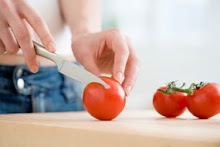The United Nations Environment Program has recently released a report titled ‘The environmental food crises’ which says that if agriculture and food waste are used as animal feed, instead of cereals, then we’d able to feed an additional 3 billion people.
The recently held Copenhagen summit in Demark captured the imagination of all and sundry. Though the outcome was negative, the summit managed to bring together over 192 nations, on one platform to discuss issues on global warming.
However, the food security summit held in Rome just last month went totally unnoticed. Even media that had been steadily drumming up the hype around Copenhagen seemed least interested. This was surprising, considering that food and water crises would hit the world much sooner than global warming crises. Moreover, aren’t both issues interconnected?
It is being reported that in developed nations, animals are fed around 8 kg of cereals, in return for 1 kg of meat. Isn’t this a massive waste of food resources when hundred of millions worldwide are dying of starvation and malnutrition? The United Nations Environment Program has recently released a report titled ‘The environmental food crises’ which says that if agriculture and food waste are used as animal feed, instead of cereals, then we’d able to feed an additional 3 billion people.
Today, there is a growing disparity between demand and supply of food. In between 1700 and 1961, population grew almost five-times. However, increased agricultural produce was possible because the land under cultivation matched the growing demand for food. Since then, land under cultivation has grown by 8 percent; on the other hand, population has grown almost by 80 percent. The launch of green revolution has managed to offset the difference by far.
In the recent times, the output has not been able to match the demand of the growing population. This would lead to food deficiency and higher inflation rates. The current inflation rate may be because of the increase in minimum support prices, and boost in rural purchasing power, courtesy National Rural Employment Guarantee Scheme (NREGS). And in case, the rural income keeps climbing, urbanites have to learn to live with rising prices. Nonetheless, there are many areas, where political leadership needs to chip in and call the shots.
• The late Sanjay Gandhi impelled forced sterilization measures. Since then, no other remedial measures have been launched to control India’s continually rising population. Rising population, needless to say, has remained a crucial issue that needs to be tackled head on, as it not contributes to food crises but even global warming.
• We haven’t done enough to reduce wastages, particularly involving the perishable stuff. Organized retail is the best way out to deal with this problem. This will help ease the pain of urban consumer, as he’d have to cough up lesser amount.
• India should be more technology-oriented. Say for instance, Philippines mountain slopes are being converted into rich Bt corn fields. India could tread a similar path.
Moreover, instead of looking around for inspirations, the rest of India could learn a lesson or two from one of its own prosperous states, like Gujarat, on how to boost agricultural production. According to study by International Food Policy Research Institute, Gujarat’s agricultural production has been clocking 9.6 percent growth rate per annum since 2000. It’s more than double the growth rate of India and even that of Punjab during the time of green revolution. Some of the underlying measures introduced include: building of check dams, spreading drip irrigation, and a massive increase in the network of rural roads. The land under irrigation has increased at the rate of 4.4 percent per annum, and contract farming has helped the state in a big way.
Papaya – For Health
15 years ago
